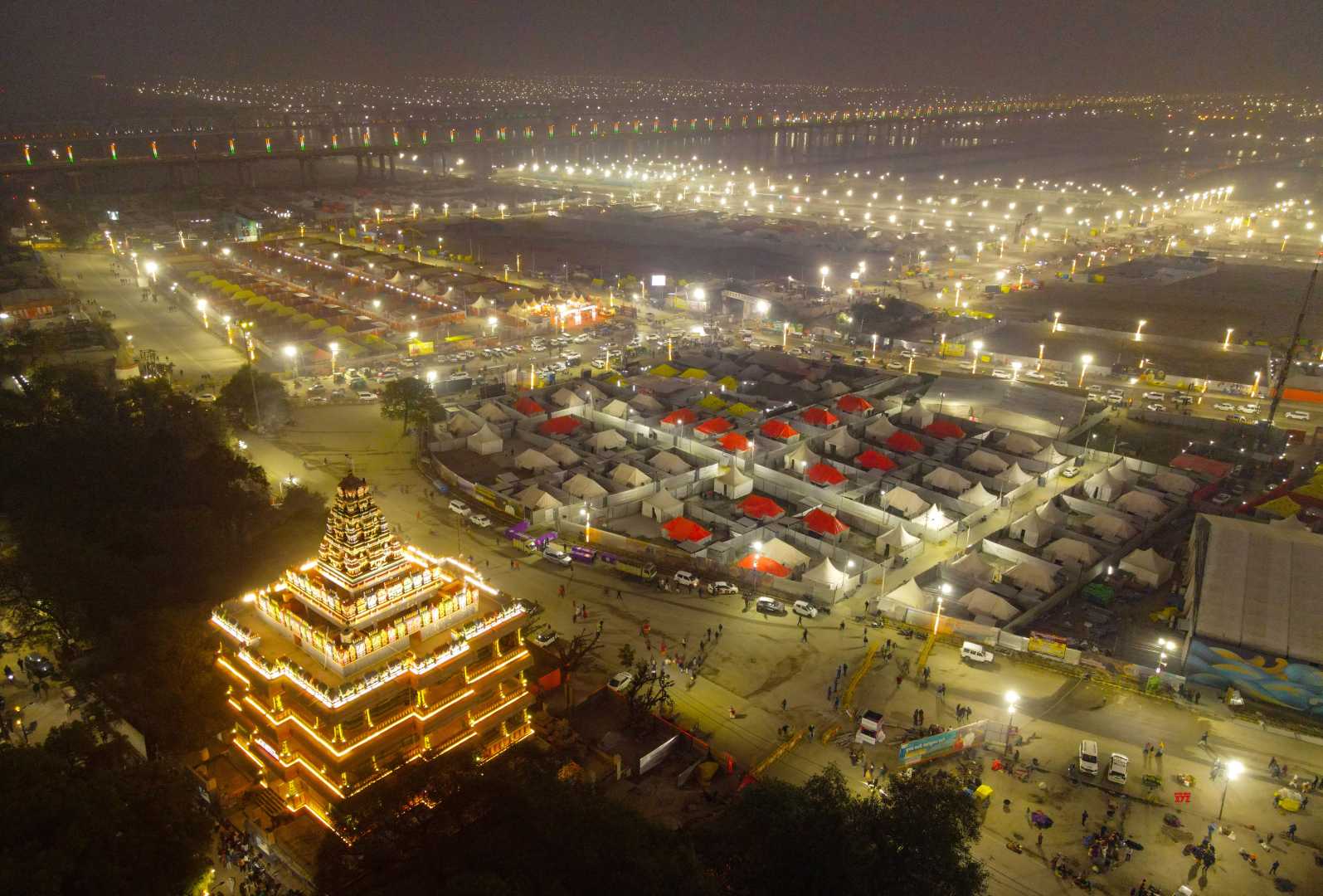World
400 Million Gather for Maha Kumbh Mela, World’s Largest Religious Festival

PRAYAGRAJ, India — Millions of Hindu devotees gathered Monday at the confluence of the Ganges, Yamuna, and mythical Saraswati rivers to mark the start of the Maha Kumbh Mela, the world’s largest religious festival. Over the next six weeks, an estimated 400 million pilgrims are expected to participate in the 45-day event in Prayagraj, Uttar Pradesh.
The festival, held every 12 years, is rooted in Hindu mythology and centers around the belief that bathing in the sacred waters of the Triveni Sangam can cleanse sins and bring spiritual liberation. This year’s event, recognized by UNESCO as an “intangible cultural heritage of humanity,” has drawn global attention, with Indian Prime Minister Narendra Modi inviting visitors worldwide.
Authorities have transformed Prayagraj into a sprawling tent city spanning 4,000 hectares, equivalent to 7,500 football fields. The infrastructure includes 160,000 tents, 150,000 toilets, and a 776-mile drinking water pipeline. “Preparations are almost complete, and all systems will be in place to welcome the visitors,” said administration official Vivek Chaturvedi.
Security measures have been significantly enhanced, with over 1,000 police officers deployed and advanced technology, including aerial and underwater drones, monitoring the event. The festival has also seen the addition of 3,000 special trains and 13,100 train services to accommodate the influx of pilgrims.
Hindu seer Mahant Ravindra Puri described this year’s festival as “extra special,” citing the rare alignment of planets and stars. “Such perfection is being observed after 12 Kumbh festivals or 144 years,” he said. The event will feature six particularly auspicious bathing days, with the largest gathering expected on January 29, when 50 to 60 million worshippers are predicted to take to the waters.
Despite the grandeur, some pilgrims have raised concerns about inadequate facilities. Baba Amarnathji, a 60-year-old monk, lamented the lack of accommodations for sadhus like himself. “Everyone says this festival is meant for sadhus like me, but I see that all the arrangements are being made for tourists,” he said.
The festival, which concludes on February 26, is not only a spiritual event but also a significant economic driver. The Indian government has invested 70 billion rupees ($812 million) in organizing the event, with the state government projected to earn 250 billion rupees ($2.9 billion) in revenue.












